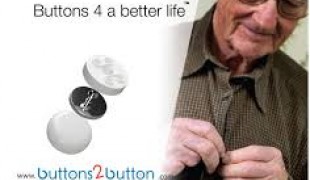- 6944
- 577
- 6
- 7
- 0
- Help Ukraine
About the solution
Since childhood, Peimin Feng has been seeing his father alone taking care of his grandfather, who was paralyzed and not able to move. Taking care of a bedridden patient was tough, especially when helping him to put on and take off clothes.
By the end of 2015, as a grade 5 student in primary school, Peimin Feng was determined to reduce the burden on his father, and came up with the idea of developing a set of clothes more convenient to put on and take off for his grandfather and other paralyzed patients. With the help of his supervisor, Feng renovated the traditional way to put on and take off patient clothes, and during 9 months of improvement and experimenting, he included more features for bedridden patients and completed the prototype of “Easy-Wear” patient clothes.
“The clothes are particularly suitable for the patients who could not move”, said Feng. The top applies velcro on both sides, and the sleeves consist of two parts to support either long or short sleeves; the waist part is equipped with a portable pillow to make the patient more comfortable; the pants also have velcro on the sides and crotch part, which enable the patient to relieve themselves and change at ease when getting dirty. Besides, a pager was installed for the patient to call the caregivers conveniently.
The renovated patient clothes made by Feng have provided great convenience to his grandfather, and also saved his father a lot of time and when helping his grandfather putting on and taking off clothes. Feng’s innovation won the gold award in a national youth innovation activity, and the special patient clothes are now under experimentation in a few local hospitals.
Feng and his supervisor believe that the innovation could significantly improve the life quality of patients who could not take care of themselves.
Adapted from: Boy develops special clothes for his paralyzed grandfather
This solution shall not include mention to the use of drugs, chemicals or biologicals (including food); invasive devices; offensive, commercial or inherently dangerous content. This solution was not medically validated. Proceed with caution! If you have any doubts, please consult with a health professional.
DISCLAIMER: This story was written by someone who is not the author of the solution, therefore please be advised that, although it was written with the utmost respect for the innovation and the innovator, there can be some incorrect statements. If you find any errors please contact the patient Innovation team via info@patient-innovation.com
-
-
443
-
7
-
7339

Woman creates magnetic buttons to help stepfather who has Parkinson's disease get dressed
(SELF)-CARE: DRESSING: Dressing independently.
Grip
CAREGIVING
Parkinson's Disease
Multiple Sclerosis
Bone Disorders (Decalcification, Bone Deformity, Bone Fracture, Bone Infection)
diabetes type 2
Assistive Daily Life Device (to help ADL)
Body-Worn solutions (Clothing, accessories, shoes, sensors...)
Muscle weakness
Tremors
Difficulty coordinating movements
Stiffness or rigidity (difficulty moving)
Limited range of motion
Muscle pain or stiffness
Loss of balance
Reduced grip force (grip)
Trouble with fine motor skills (e.g., writing, buttoning clothes)
Loss of muscle coordination
Muscle cramps or spasms
Joint deformity
Muscle twitching
Numbness or tingling in the extremities
Joint pain or swelling
Promoting self-management
Managing Neurological Disorders
Promoting inclusivity and social integration
Caregiving Support
Endocrinology
Neurology
Orthopedics
Rheumatology
United States
-
-
-
556
-
0
-
7489

Slacks with zippers on both sides for patients who have to stand up in public
CAREGIVING
(SELF)-CARE: DRESSING: Dressing independently.
Amyotrophic Lateral Sclerosis
Strategy/Tip
Body-Worn solutions (Clothing, accessories, shoes, sensors...)
Tremors
Muscle cramps or spasms
Stiffness or rigidity (difficulty moving)
Muscle weakness
Trouble with fine motor skills (e.g., writing, buttoning clothes)
Sleep disturbances
Numbness or tingling in the extremities
Restoring mobility
Managing pain
Promoting self-management
Managing Neurological Disorders
Promoting inclusivity and social integration
Preventing (Vaccination, Protection, Falls, Research/Mapping)
Caregiving Support
General and Family Medicine
Medical Genetics
Medical Oncology
Neurology
Orthopedics
Physical Medicine and Rehabilitation
Rheumatology
United States
-
-
-
730
-
3
-
12425

How to keep shoe lace tied
CAREGIVING
WALKING: Walking
Arthritis
Rheumatoid Arthritis
Neuromuscular Disorders
Assistive Daily Life Device (to help ADL)
Body-Worn solutions (Clothing, accessories, shoes, sensors...)
Difficulty walking or moving
Muscle weakness
Muscle cramps or spasms
Difficulty coordinating movements
Stiffness or rigidity (difficulty moving)
Limited range of motion
Muscle pain or stiffness
Loss of muscle coordination
Swelling or inflammation
Difficulty standing from a seated position
Back pain
Joint pain or swelling
Caregiving Support
General and Family Medicine
Neurology
Orthopedics
Public Health
Rheumatology
Aging
Mobility issues
Caregiver Support
United States
-
 en
en